
YMAA Recomended Books
Switch to solid background Switch back to transparent
Press & Media info
What's New?
Xing Yi Snake - by Glen Board
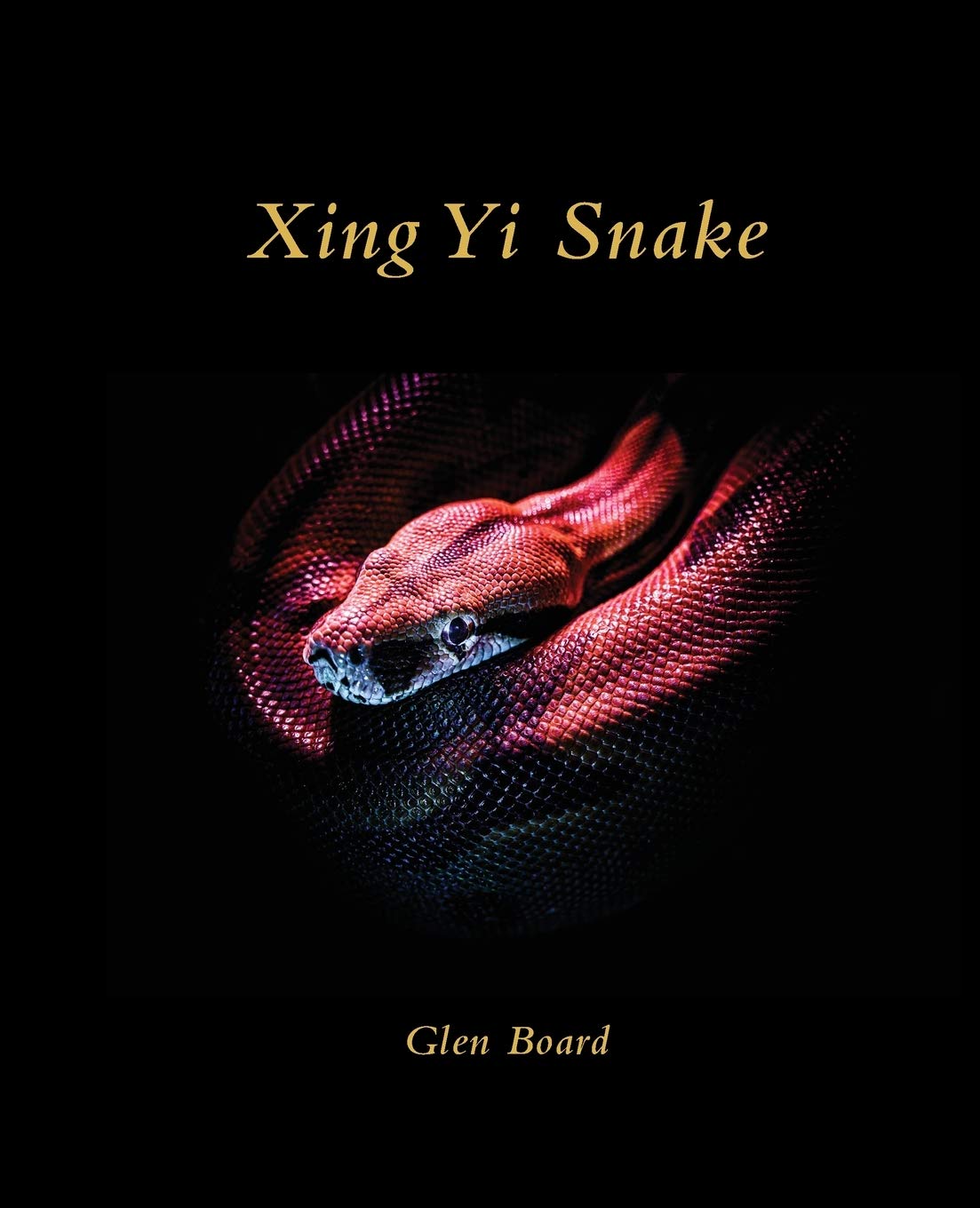 This book takes you on an in-depth study of one of Xing Yi’s fundamental fighting strategies, which is the fascinating methods of She Xing, or Snake. Two different Snakes are studied within the art of Xing Yi, which are the Constrictor and the Viper, where their characters are embodied to use as a very robust fighting strategy. Both of these animal strategies are looked at in the pages of this book, as well as a range of Xing Yi’s other fundamental concepts. This is a must have book for anyone who has an interest in Xing Yi in particular, or martial arts in general, and who would like to explore the fighting strategy of snakes within a martial context. Amazon link.
This book takes you on an in-depth study of one of Xing Yi’s fundamental fighting strategies, which is the fascinating methods of She Xing, or Snake. Two different Snakes are studied within the art of Xing Yi, which are the Constrictor and the Viper, where their characters are embodied to use as a very robust fighting strategy. Both of these animal strategies are looked at in the pages of this book, as well as a range of Xing Yi’s other fundamental concepts. This is a must have book for anyone who has an interest in Xing Yi in particular, or martial arts in general, and who would like to explore the fighting strategy of snakes within a martial context. Amazon link.
A Study of Tai and Tuo Xing - by Glen Board
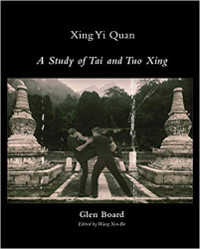 Xing Yi Quan, or 'Character Intention Boxing' is the oldest of all of the known internal martial arts that are still in existence today, with a historically traceable lineage. Its techniques and strategies were developed and polished on the battlefields of China during the feudal era, from the Sung Dynasty (960-1279) onwards and are said to have descended from the famous armies of Marshal Yue Fei. This new book on Xing Yi takes an in-depth look at the advanced fighting strategies of Tai (Flycatcher) and Tuo (Crocodile) Xing which were added to the art by Master Li Neng Ran. It covers the history, fighting methods and auxiliary concepts which are rarely presented in books on Xing Yi and also contains over 500 photographs showing both the applications and potential linking sequences for both Tai and Tuo Xing. This is a must have book for any Xing Yi practitioner. Amazon link.
Xing Yi Quan, or 'Character Intention Boxing' is the oldest of all of the known internal martial arts that are still in existence today, with a historically traceable lineage. Its techniques and strategies were developed and polished on the battlefields of China during the feudal era, from the Sung Dynasty (960-1279) onwards and are said to have descended from the famous armies of Marshal Yue Fei. This new book on Xing Yi takes an in-depth look at the advanced fighting strategies of Tai (Flycatcher) and Tuo (Crocodile) Xing which were added to the art by Master Li Neng Ran. It covers the history, fighting methods and auxiliary concepts which are rarely presented in books on Xing Yi and also contains over 500 photographs showing both the applications and potential linking sequences for both Tai and Tuo Xing. This is a must have book for any Xing Yi practitioner. Amazon link.
Tai Chi Chuan: a Comprehensive Training Manual - by Sifu R Rand
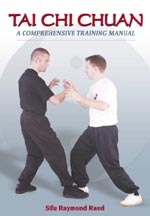 The practice of Tai Chi Chuan is, essentially, a practical study of the complementary
yet opposite forces of nature through the medium of a martial art. In essence,
a study of Yin and Yang in action. Approaching the art from this, somewhat nebulous,
perspective however would bear little fruit for most people. It is therefore
necessary to break the practice down into more manageable principles and accomplish
each of these in turn before it is possible to approach the practice of Tai
Chi Chuan so directly.
The practice of Tai Chi Chuan is, essentially, a practical study of the complementary
yet opposite forces of nature through the medium of a martial art. In essence,
a study of Yin and Yang in action. Approaching the art from this, somewhat nebulous,
perspective however would bear little fruit for most people. It is therefore
necessary to break the practice down into more manageable principles and accomplish
each of these in turn before it is possible to approach the practice of Tai
Chi Chuan so directly.
This book both sets out the steps necessary for proficiency in the art and lays out a comprehensive training programme with which to accomplish those steps.
The purpose of this book is to provide a set of training manuals which will help a student of any style, from beginner to advanced, both in the pursuit of his or her training and in judging his or her level of attainment against some logical milestones, together with training methods for each level.
It is hoped that this will help people to make better use of other training materials as well as provide training techniques for the enhancement of learning the major stages of Tai Chi Chuan practice.
The book includes:
- Answers to common questions about Tai Chi Chuan
- Advice on what to look for in a teacher and how to train on your own
- Detailed explanations of warm up and stretching exercises and the Pa Tuan Jin
- Practical advice on self-defence and self-defence technique
- In-depth and practical explanation of the principles and concepts of Push Hands training
- Excerpts from the Tai Chi Classics with commentary by the author
ISBN: 1 86126 682 0
Complete Health and Well-being with Tai Chi - by Sifu Donald Kerr
 Sifu Donald Kerr's amazing Tai Chi health exercises are quick and easy to learn and are designed
specifically for busy, stressed people. In just a few minutes each day you can feel healthier, fitter
and happier with his proven techniques. Donald is a noted complementary health professional and Tai
Chi Chuan teacher who has studied under many of China's leading complimentary health experts.
Sifu Donald Kerr's amazing Tai Chi health exercises are quick and easy to learn and are designed
specifically for busy, stressed people. In just a few minutes each day you can feel healthier, fitter
and happier with his proven techniques. Donald is a noted complementary health professional and Tai
Chi Chuan teacher who has studied under many of China's leading complimentary health experts.
Zhan Zhuang-The Art of Nourishing Life - by Dr. Yu Yong Nian
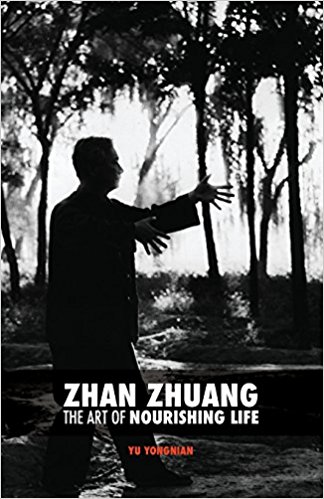 In Zhan Zhuang, The Art of Nourishing Life, Grandmaster Yu Yong Nian not only unveils the heritage of martial and purifying arts
- previously available only in an unintelligible form - but also translates them into an accessible form that reveals
the laws governing the body and the mind.
In Zhan Zhuang, The Art of Nourishing Life, Grandmaster Yu Yong Nian not only unveils the heritage of martial and purifying arts
- previously available only in an unintelligible form - but also translates them into an accessible form that reveals
the laws governing the body and the mind.
Translated by: Brittany Leotaud and Zhang Ying Zhu
Step by Step Tai Chi - by Master Lam Kam Chuen
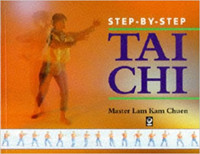 This manual of Tai Chi offers an illustrated programme of graduated exercise routines and a step-by-step
demonstration of a short sequence. The slow, flowing movements incorporate and harmonize some of the most
important elements common to classical Tai Chi styles such as Chen, Yang, Wu, Shin and Ng. It is a
programme of beneficial health care that is a powerful antidote to stress. The book is suitable for all
newcomers to Tai Chi, as well as students of all styles.
This manual of Tai Chi offers an illustrated programme of graduated exercise routines and a step-by-step
demonstration of a short sequence. The slow, flowing movements incorporate and harmonize some of the most
important elements common to classical Tai Chi styles such as Chen, Yang, Wu, Shin and Ng. It is a
programme of beneficial health care that is a powerful antidote to stress. The book is suitable for all
newcomers to Tai Chi, as well as students of all styles.
The Way of Energy - by Master Lam Kam Chuen
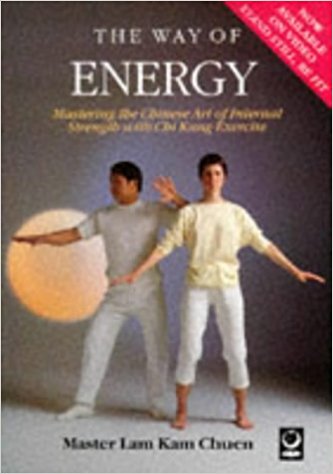 In a world dizzy with activity and motion, the idea of attaining the pinnacle of stress-free health and
inner strength without moving a muscle is compelling. This handbook introduces a highly refined achievement
of Chinese culture - the technique of Zhan Zhuang energy exercise.
In a world dizzy with activity and motion, the idea of attaining the pinnacle of stress-free health and
inner strength without moving a muscle is compelling. This handbook introduces a highly refined achievement
of Chinese culture - the technique of Zhan Zhuang energy exercise.
The Way of Power - by Master Lam Kam Chuen
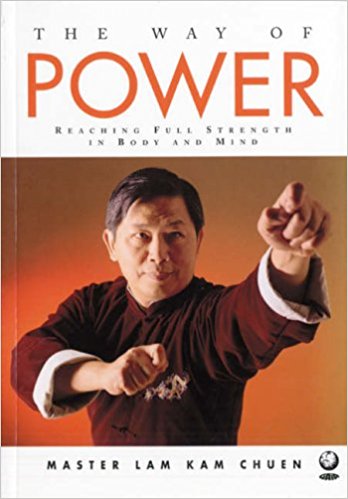 The internal energy techniques that produce the power of mind and body for which Chinese masters are renowned.
These are known in China as Da Cheng Chuan - The Great Accomplishment. They feature classical Chi Kung exercises,
but also movements drawn from the most powerful martial arts.
The internal energy techniques that produce the power of mind and body for which Chinese masters are renowned.
These are known in China as Da Cheng Chuan - The Great Accomplishment. They feature classical Chi Kung exercises,
but also movements drawn from the most powerful martial arts.
The I-Ching - translated by Richard Wilhelm, Cary F Baynes
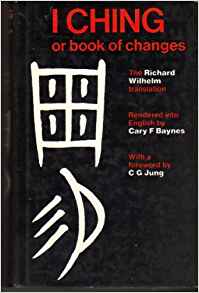 The I Ching, also known as Classic of Change or Book of Change, is an ancient Chinese text and the oldest of the Chinese classics.
Possessing a history of more than two and a half millennia of commentary and interpretation, the I Ching is an influential text read throughout the world, providing
inspiration to such disciplines as religion, psychoanalysis, business, literature, and art. Atributed to the Western Zhou period (1000-750 BC) the I Ching is a pictographical
description of the theory of cosmology, in the form of Wu Chi, Tai Chi and the interaction of the Ten Thousand Things. It has been extensively used for divination. Over
the course of the Warring States period and early imperial period (500-200 BC) it was transformed into a cosmological text with a series of philosophical commentaries
known as the "Ten Wings". After becoming part of the Five Classics in the 2nd century BC, the I Ching was the subject of scholarly commentary and the basis for divination
practice for centuries across the Far East, and eventually took on an influential role in Western understanding of Eastern thought.
The I Ching, also known as Classic of Change or Book of Change, is an ancient Chinese text and the oldest of the Chinese classics.
Possessing a history of more than two and a half millennia of commentary and interpretation, the I Ching is an influential text read throughout the world, providing
inspiration to such disciplines as religion, psychoanalysis, business, literature, and art. Atributed to the Western Zhou period (1000-750 BC) the I Ching is a pictographical
description of the theory of cosmology, in the form of Wu Chi, Tai Chi and the interaction of the Ten Thousand Things. It has been extensively used for divination. Over
the course of the Warring States period and early imperial period (500-200 BC) it was transformed into a cosmological text with a series of philosophical commentaries
known as the "Ten Wings". After becoming part of the Five Classics in the 2nd century BC, the I Ching was the subject of scholarly commentary and the basis for divination
practice for centuries across the Far East, and eventually took on an influential role in Western understanding of Eastern thought.
The Tao Te Ching - Lao Tzu
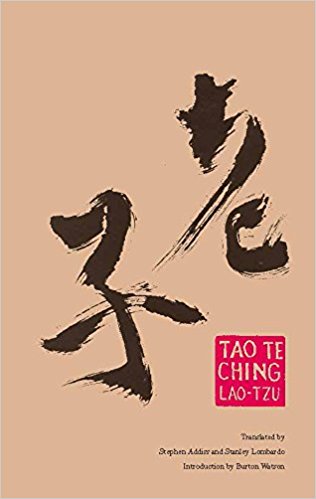 Credited to the 6th-century BC sage Lao Tzu. The text's authorship, date of composition and date of compilation are debated but the oldest excavated portion dates back to the late 4th century BC.
The Tao Te Ching, along with the Chuang Tzu, is a fundamental text for both philosophical and religious Taoism. It also strongly influenced other schools of
Chinese philosophy and religion, including Legalism, Confucianism, and Buddhism, which was largely interpreted through the use of Taoist words and concepts
when it was originally introduced to China. Many Chinese artists, including poets, painters, calligraphers, and gardeners, have used the Tao Te Ching as a
source of inspiration. Its influence has spread widely outside East Asia. An unabridged version of the Tao Te Ching is available in the member's area.
Credited to the 6th-century BC sage Lao Tzu. The text's authorship, date of composition and date of compilation are debated but the oldest excavated portion dates back to the late 4th century BC.
The Tao Te Ching, along with the Chuang Tzu, is a fundamental text for both philosophical and religious Taoism. It also strongly influenced other schools of
Chinese philosophy and religion, including Legalism, Confucianism, and Buddhism, which was largely interpreted through the use of Taoist words and concepts
when it was originally introduced to China. Many Chinese artists, including poets, painters, calligraphers, and gardeners, have used the Tao Te Ching as a
source of inspiration. Its influence has spread widely outside East Asia. An unabridged version of the Tao Te Ching is available in the member's area.
The Book of Chuang Tzu - Chuang Tzu
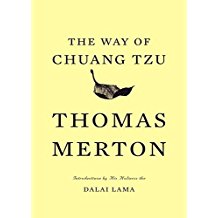 The Chuang Tzu is an ancient Chinese text from the late Warring States period (476-221 BC) which contains stories and anecdotes that exemplify the carefree
nature of the ideal Taoist sage. Named for its traditional author, "Master Chuan Tzu" (Zhuang Zi), the Chuang Tzu is - along with the Tao Te Ching - one of the
two foundational texts of Taoism, and is generally considered the most important of all Taoist writings.
The Chuang Tzu is an ancient Chinese text from the late Warring States period (476-221 BC) which contains stories and anecdotes that exemplify the carefree
nature of the ideal Taoist sage. Named for its traditional author, "Master Chuan Tzu" (Zhuang Zi), the Chuang Tzu is - along with the Tao Te Ching - one of the
two foundational texts of Taoism, and is generally considered the most important of all Taoist writings.
Lee's Modified Tai Chi Chuan: for Health - by Lee Ying-Arng
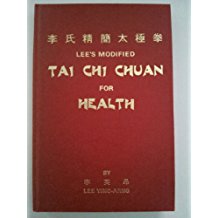 Out of print for many years this book still crops up on the Internet and in book shops from time-to-time.
Well worth a read - if you can find a copy.
Out of print for many years this book still crops up on the Internet and in book shops from time-to-time.
Well worth a read - if you can find a copy.
Iron Palm in 100 days - by Lee Ying-Arng
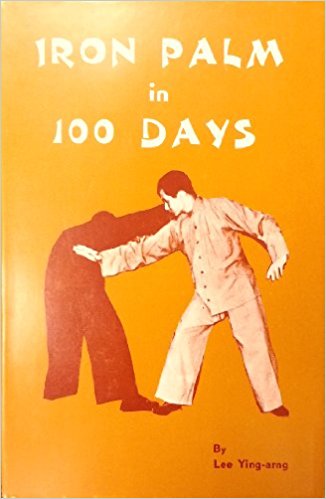 Again; out of print for many years this book still crops up on the Internet and in book shops from time-to-time.
Well worth a read - if you can find a copy - as this is the bulk, of the external part, of the Ku Yue Chang method.
Again; out of print for many years this book still crops up on the Internet and in book shops from time-to-time.
Well worth a read - if you can find a copy - as this is the bulk, of the external part, of the Ku Yue Chang method.
Iron Palm Training - by H C Chao
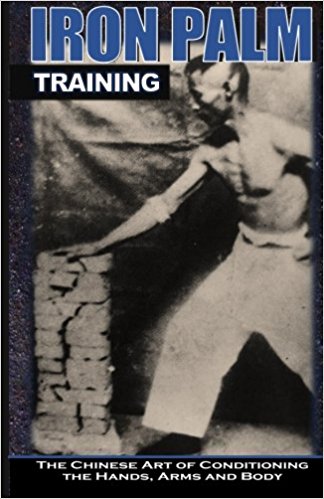 A book filled with training tips to develop Iron Palm and also the Stomping and Cutting Palms.
This is an old book from the 1950s, which has been digitally recovered, and was one of the very first to fully teach this ancient method of conditioning
the hands, arms and body in a traditional way. The cover picture is of Ku Yue Chang.
A book filled with training tips to develop Iron Palm and also the Stomping and Cutting Palms.
This is an old book from the 1950s, which has been digitally recovered, and was one of the very first to fully teach this ancient method of conditioning
the hands, arms and body in a traditional way. The cover picture is of Ku Yue Chang.
Be aware that there are serious issues with the reproduction of this book. It suffers from degradation, miss aligned pages and poor photographic reproduction. The subject matter is good, if you can decipher the print.
The Art of War - Sun Tzu
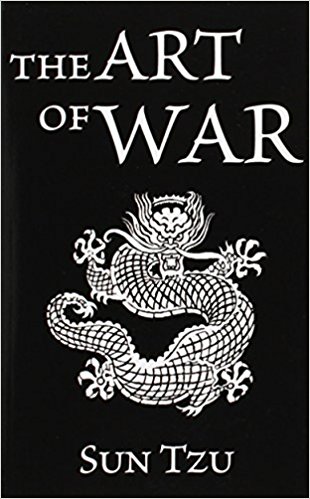 Sun Tzu's The Art of War has been a vastly influential treatise on military strategy in the east from the time of China's Warring States Period (403-221 BC) onward.
Though its first translation into a European language was only in 1782, the book's significance was quickly recognized and even such towering figures of Western history
as Napoleon and General Douglas MacArthur have claimed it a source of inspiration.
Sun Tzu's The Art of War has been a vastly influential treatise on military strategy in the east from the time of China's Warring States Period (403-221 BC) onward.
Though its first translation into a European language was only in 1782, the book's significance was quickly recognized and even such towering figures of Western history
as Napoleon and General Douglas MacArthur have claimed it a source of inspiration.
The Book of Five Rings - by Miyamoto Musashi
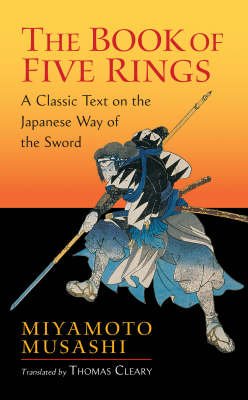 The Book of Five Rings was composed in 1643 by the famed duelist and undefeated samurai Miyamoto Musashi. Thomas Cleary's translation is immediately accessible,
with an introduction that presents the spiritual background of the warrior tradition. Along with Musashi's text, Cleary translates here another important
Japanese classic on leadership and strategy,The Book of Family Traditions on the Art of War by Yagyu Munenori, which highlights the ethical and spiritual insights
of Taoism and Zen as they apply to the way of the warrior.
The Book of Five Rings was composed in 1643 by the famed duelist and undefeated samurai Miyamoto Musashi. Thomas Cleary's translation is immediately accessible,
with an introduction that presents the spiritual background of the warrior tradition. Along with Musashi's text, Cleary translates here another important
Japanese classic on leadership and strategy,The Book of Family Traditions on the Art of War by Yagyu Munenori, which highlights the ethical and spiritual insights
of Taoism and Zen as they apply to the way of the warrior.
Tai Chi Touchstones: Yang Family Secret Transmissions - by Douglas Wile
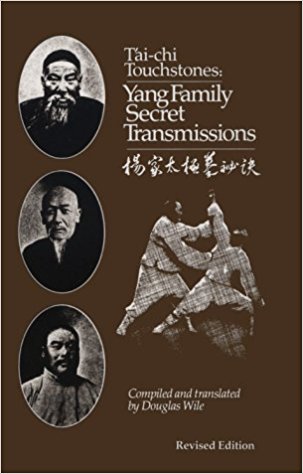 A compilation of anecdotes, historical record, and Tai Chi Chuan Classics, based around the Yang family, by Douglas Wile.
A compilation of anecdotes, historical record, and Tai Chi Chuan Classics, based around the Yang family, by Douglas Wile.
Lost Tai Chi Classics - by Douglas Wile
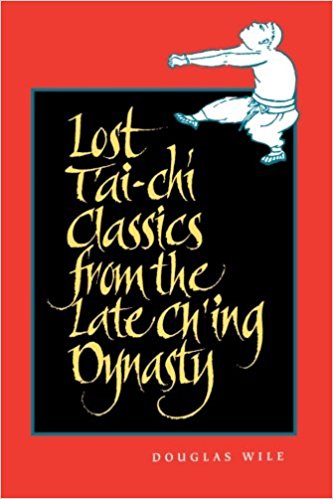 Douglas Wile translates and analyses four collections of recently released nineteenth-century manuscripts on Tai Chi Chuan. These writings of Wu's older brothers
Cheng Ching and Ju Ching, and his nephew Li I Yu, together with the transmissions of Yang Pan Hou, represent a significant addition to the seminal literature.
The texts allow us to make a fresh survey of longstanding issues in Tai Chi Chuian history: the origins of the art; the authorship of the "classics" the differences
between Wu, Yang, and Li; and the roles of Chang San Feng, Wang Tsung Yueh, Chiang Fa, and the formerly missing link, Chang Nai Chou.
Douglas Wile translates and analyses four collections of recently released nineteenth-century manuscripts on Tai Chi Chuan. These writings of Wu's older brothers
Cheng Ching and Ju Ching, and his nephew Li I Yu, together with the transmissions of Yang Pan Hou, represent a significant addition to the seminal literature.
The texts allow us to make a fresh survey of longstanding issues in Tai Chi Chuian history: the origins of the art; the authorship of the "classics" the differences
between Wu, Yang, and Li; and the roles of Chang San Feng, Wang Tsung Yueh, Chiang Fa, and the formerly missing link, Chang Nai Chou.
The Brennan Translations
Link to The Brennan Translations - Web site The Brennan Translations is a Wordpress Web site which is home to many Martial Arts Manuals translated from their original language into English by Paul Brennan. Among these works is Ku Yue Chang's (Gu Ru-Zhang) TaiJi Boxing, Explaining TaiJi Principles by Yang Ban Hou, A Study of Hsing-I Boxing by Sun Lu Tang and many more.

